The Ultimate Guide to Go-to-Market Strategy for SaaS [Examples Included]
![The Ultimate Guide to Go-to-Market Strategy for SaaS [Examples Included]](https://userpilot.com/blog/wp-content/uploads/2022/03/The-Ultimate-Guide-to-Go-to-Market-Strategy-for-SaaS.png)
Do you want to know why a go-to-market strategy is essential for your SaaS product success?
It’s all about validating your product or service idea upfront before investing more resources in it. By validating your idea, you can save time and money moving forward and ensure that your strategy is pointing in the right direction.
In this blog post, you’ll learn everything about go-to-market strategy for SaaS. We will learn how they help bring your product to market, examine some effective SaaS go-to-market strategy examples, cover what they are, why you need them, and how to create one for your SaaS business using real examples. Let’s get started!
TL;DR
- Successful product launches stand on the back of an effective GTM strategy.
- Your go-to-market strategy is simply a roadmap for how you’ll take your product to the market. It is essential for laying the groundwork for a successful business moving forward.
- SaaS GTM plans can be used in several use cases. They can be used when launching a new product into an existing market, expanding to new customers, or emerging markets.
- GTM strategies are important because they help you and decision-makers in your company build and launch better products at the right time, reducing the chances of your startup failing.
- An effective go-to-market strategy includes a selling strategy (sales-led growth, product-led growth), pricing model, target audience, and most suitable channels for marketing your product.
- Focusing on the proper metrics at this stage is crucial to how successful or bad your GTM plan will be.
- The LTV: CAC ratio is recommended to ensure you don’t start running a loss by spending more on acquisitions than you gain.
- Successful GTM strategy examples include Slack, Dropbox, Asana, Taxjar, and Loom.
Implement a product-led GTM strategy for your SaaS now!

What is a go-to-market (GTM) strategy for SaaS?
A go-to-market strategy is a comprehensive outline or guide on how to send your own product or service to the market.
It covers everything from who your potential customer or target market is, where they are, the best marketing efforts and sales strategy to reach them, your positioning tactics, pricing strategy, and more.

What is a Go-to-market strategy?
This go-to-market plan is used by product marketers and their teams to ensure you smoothly launch your product to the right customers at the right time and stand out from the competition already existing in the market.
B2B SaaS GTM strategy vs marketing strategy
A go-to-market strategy is a one-time plan that helps you break into the market while launching your product. While a marketing strategy on the other hand extends beyond the initial product launch and involves continuous marketing efforts that you’ll take to acquire customers and maintain your market space.
The main difference between a GTM strategy and a marketing strategy is that a GTM strategy focuses on one product. In contrast, a marketing strategy focuses on the actions, distribution channels, and target audience of the value proposition.
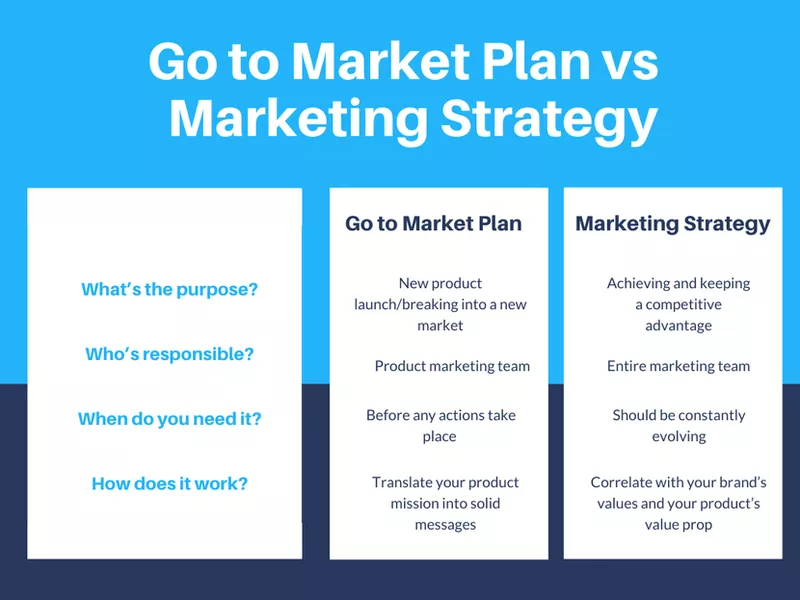
Source: IncisiveEdge
The benefits of a SaaS go-to-market strategy
When launching your new product or bringing your existing product into a new niche market, you’ll need a plan to help you easily penetrate the market and grab the attention of your target audience. This is where a go-to-market strategy comes in. It is a detailed plan that helps you figure out the right way to launch and generate bigger paybacks in the long term.
A study by Harvard Business School showed that 95% of new products launched every year, fail. A GTM strategy can help reduce your chances of failure because:
- It helps you map out all important touchpoints; i.e your potential customers and their pain points, existing competitors, and their strategies/business model. It also covers how you position yourself, and what marketing strategies you employ to stand out and gain a competitive advantage.
- GTM strategy ensures that when you launch your product, it fits the user’s needs so the product-market fit is solved.
- You can use it to determine the customer acquisition cost and choose the most suitable strategy for your SaaS company and product. Instead of using unnecessary discounts and other tactics that most SaaS companies use, you’ll be able to make more informed decisions that won’t cost you or your business.
A go-to-market strategy is useful not only in the launch phase of your product but long sales cycles and also helps you achieve a product-market fit and set a solid foundation for upcoming product operations.
How to build an effective go-to-market strategy for B2B SaaS companies?
To build an effective go-to-market strategy, there are several things you must include in your plan. These are the steps that you should take into consideration when creating one:
- Identify the right audience.
- Create value proposition and messaging.
- Decide on your sales and pricing strategy.
- Choose a marketing distribution strategy.
- Choose a customer experience strategy and customer funnel.
- Decide on the right metrics to track.
Step 1: Define your target audience
The first thing to do is identify the right user persona or target audience. Your audience will determine every other part of your SaaS go-to-market strategy. What group of people will benefit most from your product? What group will you target when you launch it? And how will you reach them?
Now when you identified your buyer personas, you can build your marketing plan and marketing campaigns around them. Focusing on one market at a time makes it easier to identify and track the right metrics. A lot of SaaS companies fail when they don’t stick to one geographical region and market.
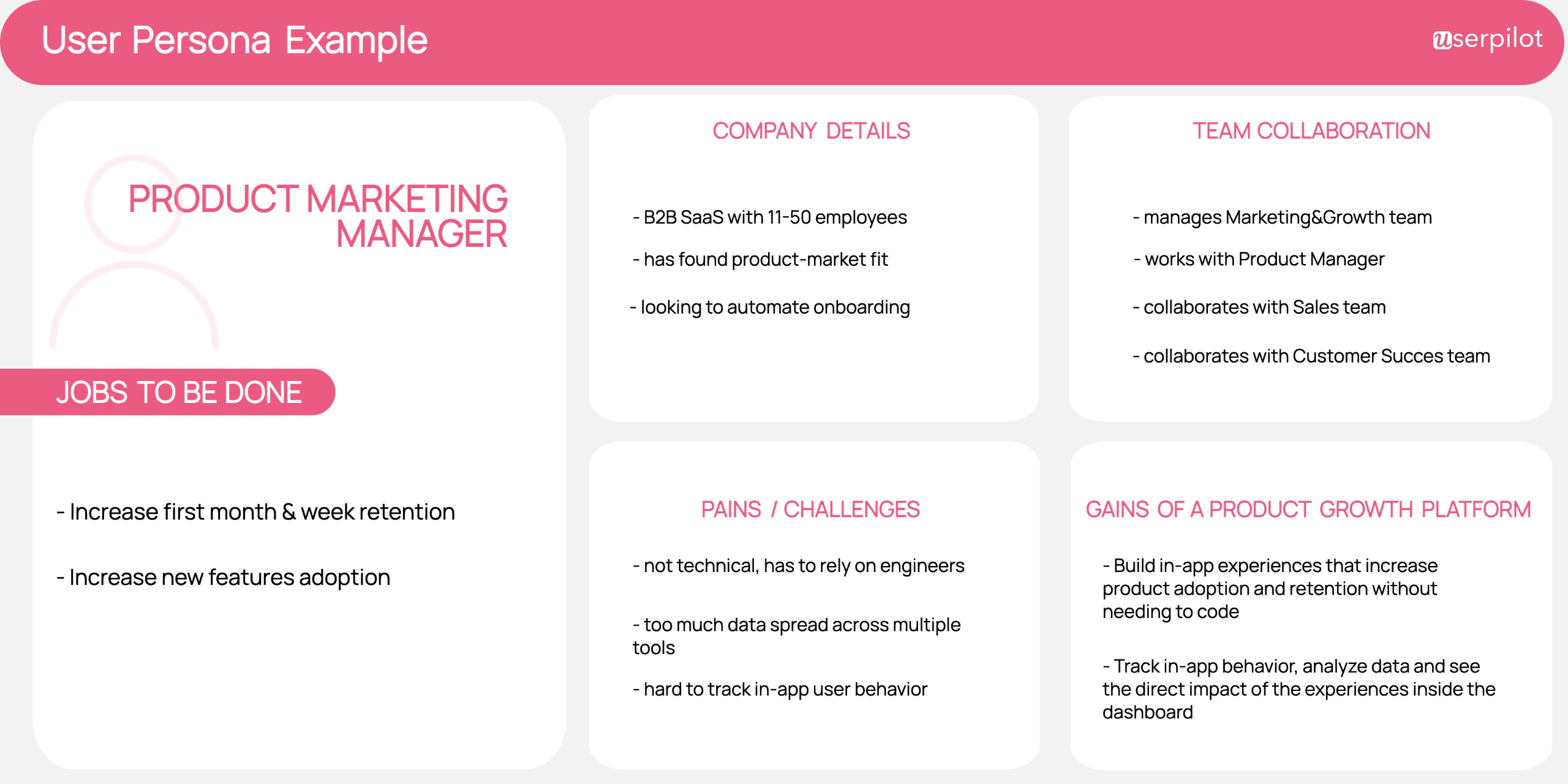
SaaS user persona example.
Step 2: Decide on your value proposition and core brand message
After you’ve identified your target audience, the next step is to develop a value matrix that will help you create your unique value proposition. This value proposition will highlight user problems and position your product as the best solution.
To do this, list out your buyer personas, their pain points, and if/how your product solves those problems. Once you’ve done this you can then create a value proposition and marketing messages for your landing page and other marketing channels to attract customers.
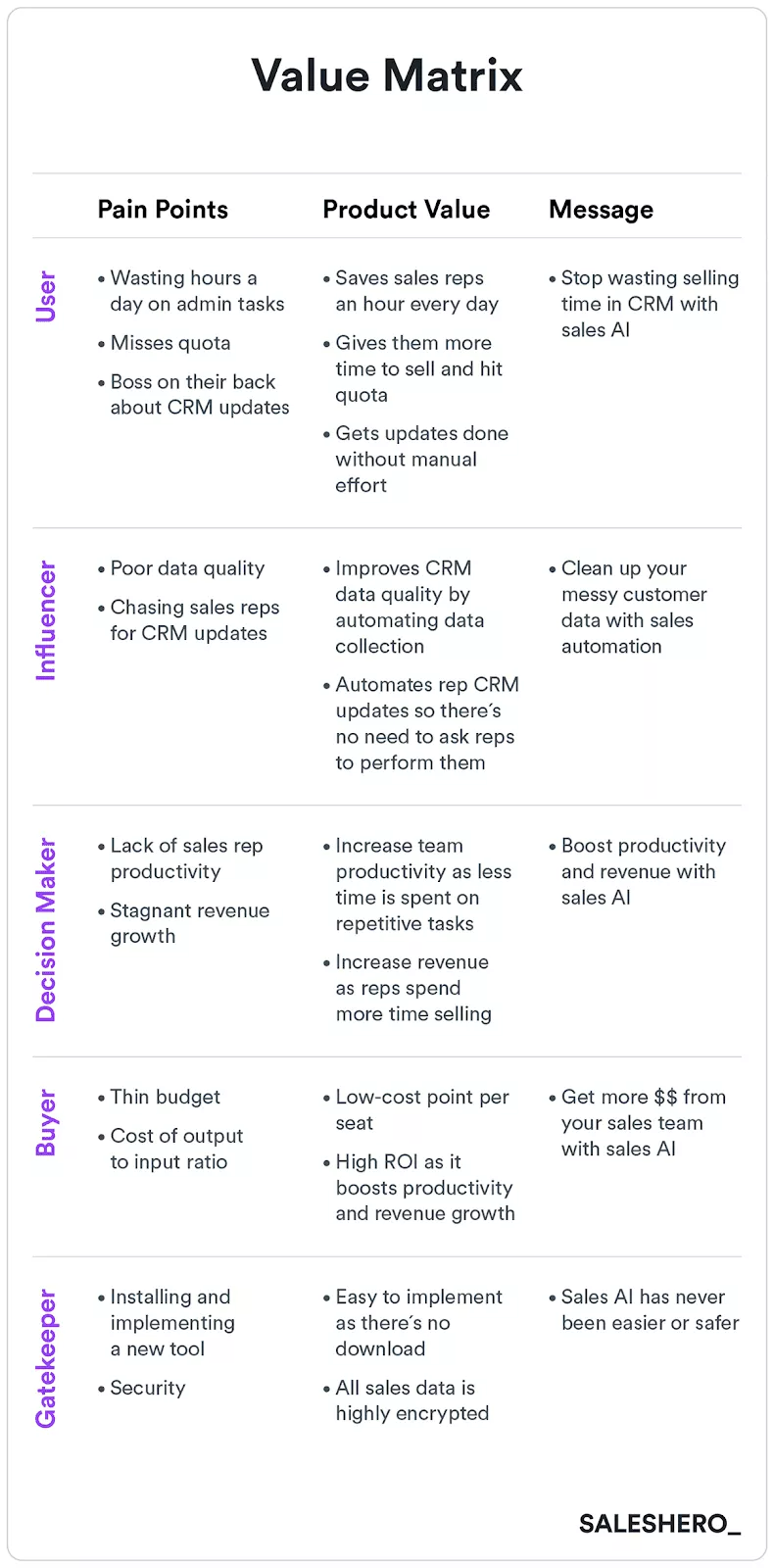
Source: Saleshero.
Step 3: Choose your pricing strategy
Choosing the appropriate pricing strategy for your B2B SaaS business is one of the important parts of your go-to-market strategy.
How will you sell your product to your target market? As SaaS pricing is subscription-based and requires a lot more commitment over the customer’s lifecycle, you have to be careful when choosing a pricing strategy.
In general, these are the pricing models used by SaaS companies:
- Freemium SaaS pricing model: this works for B2B SaaS businesses whose products may need a longer period to understand or grasp value from. You can use a free plan with limited features to give new customers a long time to explore the product and also increase their chances of upgrading to a paid plan.
- Flat rate SaaS pricing model: this involves offering your product and all its features to users at a fixed rate each month. No pricing plans based on features, they get everything at one price.
- User-based SaaS pricing model: this pricing model involves charging your customers based on how many users they have or how many of them will be using the product. It makes things much simpler for your customers because they can pick and choose a plan most suitable for their company size and change it if it increases or decreases.
- Pricing per feature SaaS pricing model: here your users’ subscription costs are determined by how many features they will need. It’s a fair pricing method that allows users to pay for only what they’ll use. If their use case changes or they need additional features, they can always upgrade.
- Tiered SaaS pricing model: most SaaS businesses use this pricing strategy because it allows you to target different types of customers since there’s a plan for everyone. It involves using multiple packages with various features and prices to attract customers.
- Pay-as-you-go SaaS pricing model: this pricing strategy is most commonly used by infrastructure software companies and it involves charging users based on how they use the product. The more time customers spend using your product, the higher their subscription fee is.
Step 4: Decide on your sales strategy
Before you launch your product, you have to decide on the relevant various sales strategies and approach you will adopt to acquire customers. In SaaS, there are two main types of sales go-to-market strategies employed to attract and convert potential customers.
Product-led growth strategy
In a product-led go-to-market strategy, your product is the major focus and the center of all marketing and sales efforts. This strategy involves using your product as the driving force for customer acquisition, activation, and retention.
Here, all users are allowed to experience the product for themselves under a free trial or freemium version. Users don’t need to go through members of your sales team or a sales funnel before they convert. Once they experience your product and receive value, it’s easier for them to become paying customers, and for you to increase customer lifetime value.
If you choose this strategy, marketing should be an essential part of your product development strategy.
A lot of SaaS companies adopt this product-led growth strategy, e.g, Slack and Dropbox. It is done by building a value-filled product experience that encourages users to stick around.
![]()
Implement a product-led growth strategy for your SaaS now!

Sales-led growth strategy
The sales-led strategy works best for enterprise companies like Salesforce and Microsoft whose products require more high-level guidance with a longer sales cycle. This go-to-market strategy focuses on the efforts of your marketing campaigns to attract leads, and your sales team’s ability to convince and convert them to existing customers.
Unlike in the product-led sales strategy where your product experience is responsible for conversions, a sales-led strategy’s success relies on your marketing team’s lead generation efforts and how good your sales reps are in selling your key benefits and convincing prospects to convert.
You’ll need to be coordinated and aligned with marketing and sales teams to make sure this strategy work.
Step 5: Choose marketing channels
Your marketing strategy should explain how you intend to reach your target audience. How will you create brand awareness, drive demand, and get the attention of potential buyers?
Which channels you choose will depend on the audience you identified and what will be most effective for converting them.
Most SaaS businesses however use content marketing and search engine optimization as a marketing distribution channel to build long-term authority in their field, help users, and also, generate demand. You can also use social media to drive brand awareness, Here are some other commonly used marketing channels by the global SaaS market:
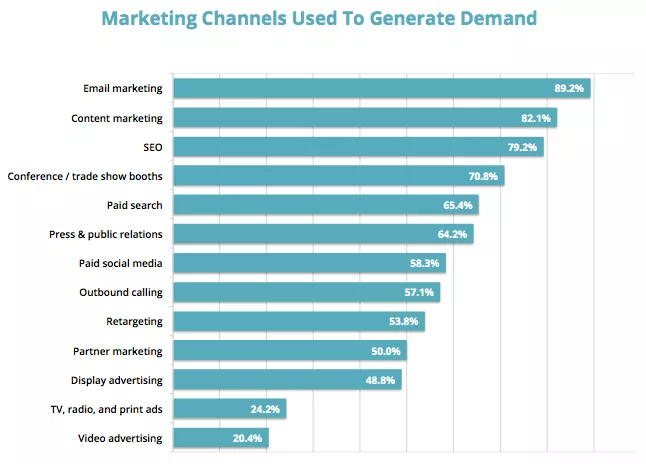
Source: Cre8tive Marketing.
Step 6: Choose a customer experience strategy and customer funnel
If you chose the product-led strategy where your product is the main driver of acquisitions and retention, you’ll need a customer experience strategy. This will ensure users have a smooth ride through your product. It also increases their chances of converting from a free trial or freemium subscription to paying customers.
The strategy addresses the entire customer journey and what can be done to drive customer success and improve the user experience at each stage.
![]()
Create product experiences code-free with Userpilot!

Step 7: Choose metrics to track the success of your go-to-market strategy
In SaaS companies, product teams will always have multiple growth metrics to track all the time. This can quickly become overwhelming so you need to focus on only a few at this stage.
Some of the key metrics are:
- Customer acquisition cost (CAC)
- Customer lifetime value (LTV)
- Channel-wise spending and revenue
Your CAC and LTV are key performance indicators of how much you’re spending to get customers. If your CAC is higher than the LTV then you’ll need to adjust either your acquisition spend or optimize your product to increase retention.
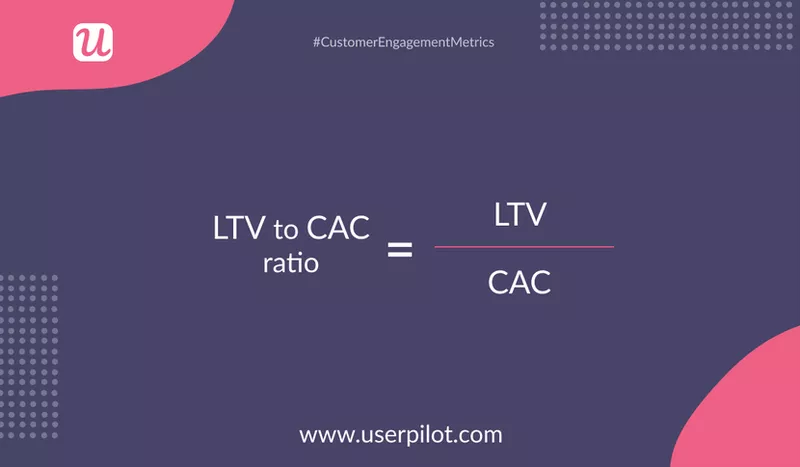
LTV to CAC ratio.
The normal LTV: CAC ratio for established companies is 3:1, but since you’re just starting, 2:1 is a good ratio.
SaaS go-to-market (GTM) strategy examples
Here are some real GTM strategy examples that you can see to get inspired. Read these success stories, and implement the key points to your business if relevant but remember that each SaaS business is unique and even though something is working for others, it might not work for you. Here we go.
SaaS go-to-market strategy example 1: Loom viral sharing
Loom, a screen recording tool was able to gain market adoption quickly because of the virality of its product. Users typically share their recorded videos with teammates or others. This served as an easy way of getting the product around really quickly and also encouraging others to sign up for a free trial.

Loom viral sharing.
SaaS go-to-market strategy example 2: Slack word-of-mouth growth and self-service
Even before Slack had its official product launch, it had been tested by several members of its target audience to check for product-market fit. When it finally launched, the product had 8,000 signups that very day and within four months they were at 1.1 million active users.
The word-of-mouth strategy worked so well for Slack as a market research tool to collect useful customer feedback and product insights before launching. And also in reducing their customer acquisition costs. Slack used the potential customers’ experience of their product, not a sales strategy to grow.

Slack’s GTM strategy.
This product-led SaaS company still practices this through its freemium model even though they now have an inside sales team for enterprise customers.
SaaS go-to-market strategy example 3: Taxjar authoritative content strategy
When Taxjar started operations, there wasn’t much content around taxes. So they decided to use content marketing and SEO as their go-to-marketing channels.
By creating quality content that educated their target market and answered their questions related to taxes (especially sales tax), they were able to create brand awareness and gain a competitive advantage as authority figures on the subject, even to this day.
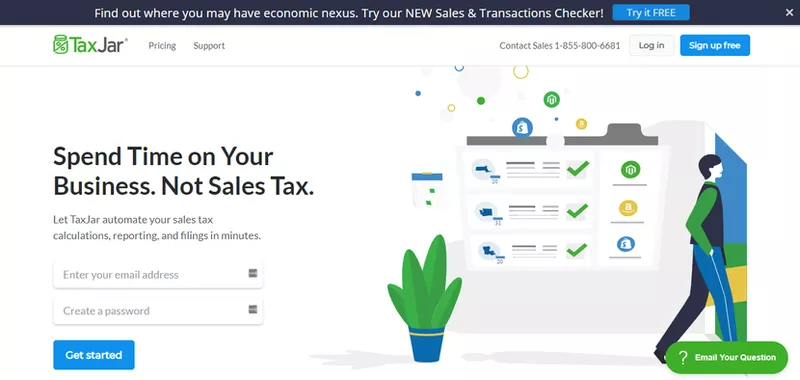
Taxjar’s GTM strategy..
SaaS go-to-market strategy example 4: Dropbox leverages content marketing strategies
Businesses like Dropbox use content marketing strategies such as videos and webinars to attract relevant customers across business, personal, and tech packages. It develops a continuous stream of customers through content marketing outreach, creating a growth loop.
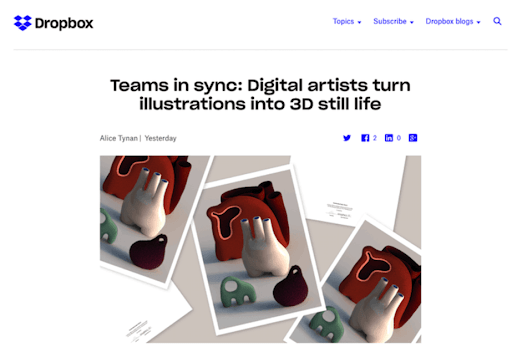
Dropbox’s GTM strategy.
Following Dropbox’s example, you can start small, document your journey on social media, Twitter, and LinkedIn, and post on online forums.
SaaS go-to-market strategy example 5: Asana’s core brand message
In its messaging, Asana focused on showing that its product was easy to use and easy to scale, plus it was affordable. Moreover, they have several user personas and use that information to showcase their product.
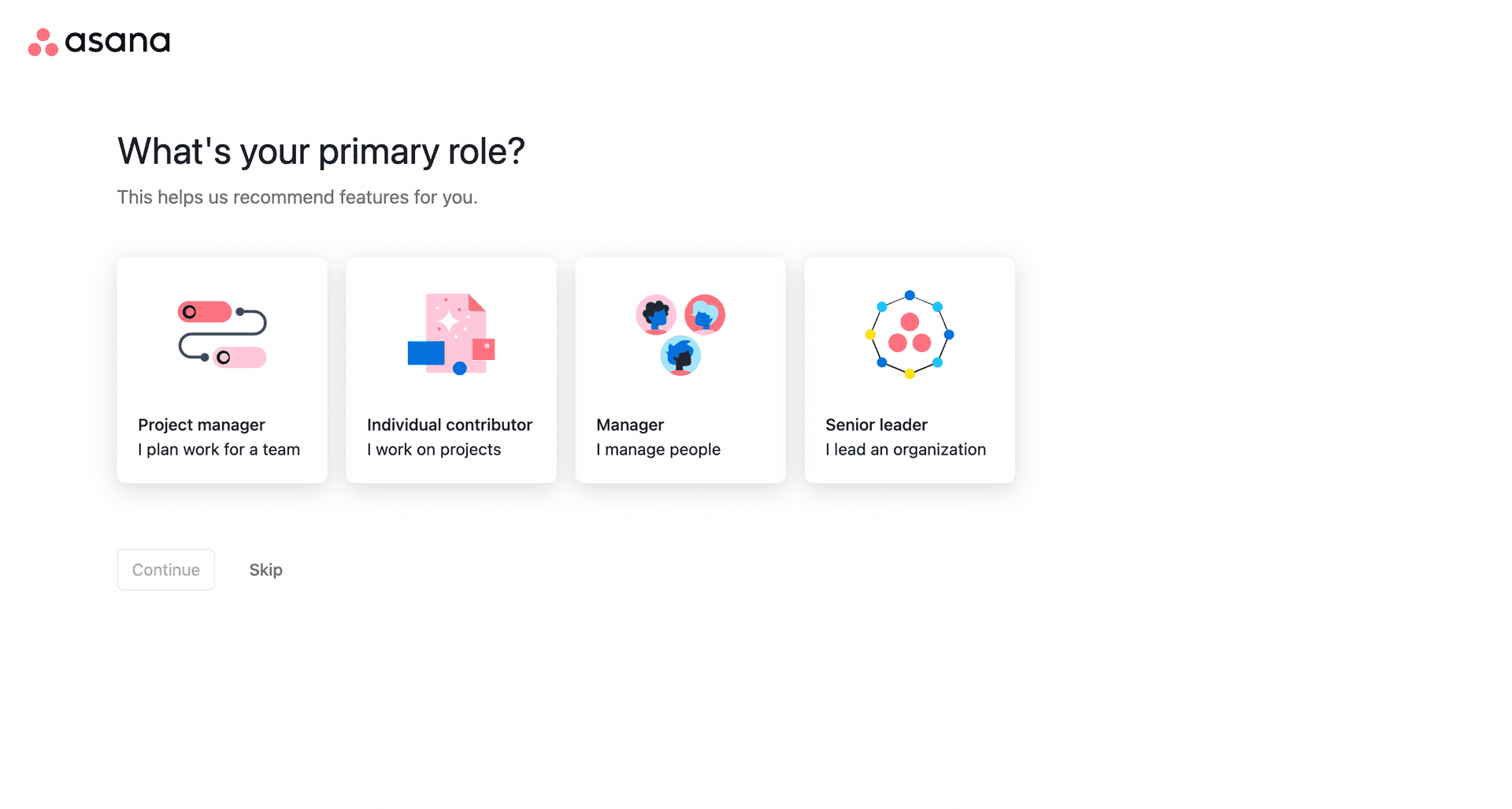
Asana’s GTM strategy.
Conclusion
The go-to-market strategy is a key step in product development and launch. Without it, you’ll be sending your product into a market with no plan for how it’ll attract customers, stand out from the existing competition, or grow.
Regardless of how good you think your product is, it’s always best to launch the right way at the right time and to the right audience. A go-to-market strategy does it by setting your expectations and eliminating the need for guesswork or assumptions.
Want to implement a product-led strategy and build product experiences code-free? Book a demo with our team to get started!
![]()
Implement a product-led strategy and build product experiences code-free!


